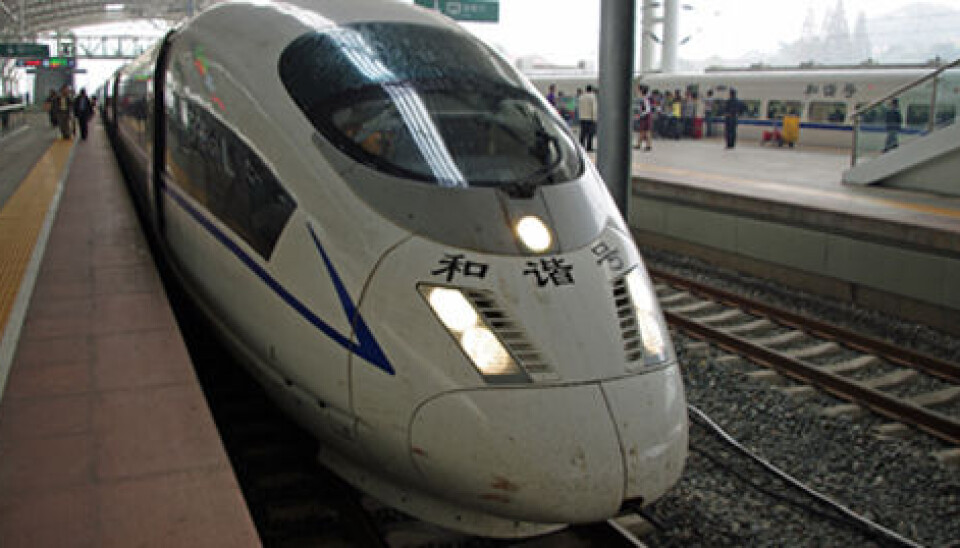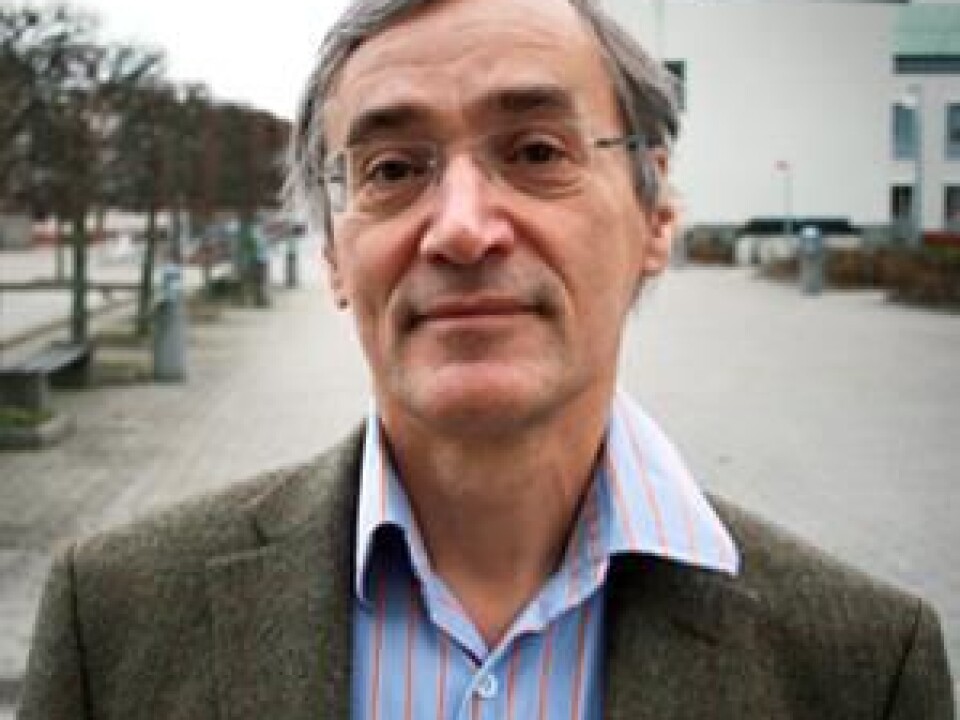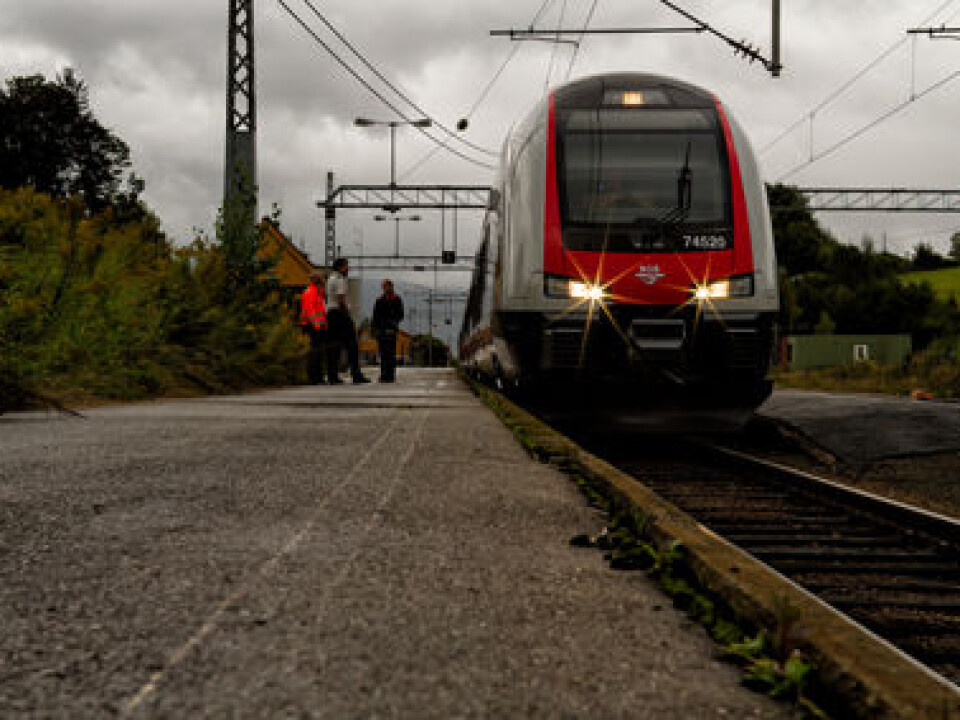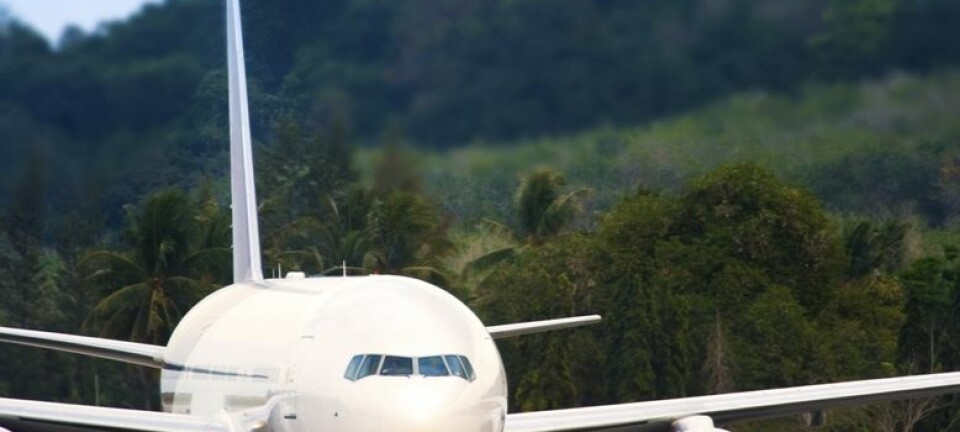
Red figures for Oslo - Stockholm fast train
The bottom line figures flash as red as a stoplight when using a new method of calculating the profitability of a prospective high-speed rail between the Norwegian and Swedish capitals.
Maybe a high-speed rail link between Oslo and Stockholm would have to run via Gothenburg?
In any case, that’s the way Lars Hultkranz figures it. Hultkranz is a professor in national economics at Örebro University and has used special calculations to assess whether such a gigantic investment would pay off.
How much money is time?
The difference between Hultkrantz’s calculations and ordinary arithmetic is that he tries to account for the value of travel time saved.
At times the complicated math this entails can seem counterintuitive, the professor admits:
High-speed rails cater to the same travellers who currently use aircraft and who are willing to pay dearly to get to their destination fast. He contends that the profitability of saved time is often underestimated.

Nevertheless, the end result is not always as anticipated.
“Those who now make such calculations often ignore the value of the increased comfort and the opportunity to work provided by high-speed rails. Paradoxically, this leads to an overestimation of profitability,” he says.
Value tallied twice
Railway passengers can make better use of their travel time than highway or air passengers. But this advantage is already factored into calculations, because it increases the number of travellers who choose trains.
“The value of trains going faster is the product of three factors. The first is the quantity – how many people travel by train. The second is a manifestation of the time advantage – how much faster it goes. And the third part of the evaluation is time,” he says.

A single advantage can be factored in twice when calculations fail to consider that travellers’ estimations of the value of time spent en route include opportunities to sleep or work aboard the train,” says Lars Hultkrantz.
Expensive in Norway
One of the examples he has examined involved his home turf, as Örebro is on the old line between Oslo and Stockholm. He has calculated the economy of building a high-speed line between Gothenburg and Stockholm as well. The newly opened line between Beijing and the Hongqiao Airport outside Shanghai has been put to the same acid test.
“With these modifications the proposed investments in high-speed rails between Stockholm and Oslo and between Stockholm and Gothenburg are not economically viable for society. But the profitability of the line between Beijing and Shanghai rises considerably,” asserts Hultkrantz.
He hasn’t applied his maths to other proposed high-speed rail lines in Norway. But he thinks it reasonable to assume that such links between Oslo and Stavanger, Bergen or Trondheim would be even less profitable than between Oslo and Stockholm.
“It appears to be frightfully more expensive to build high-speed rail lines in Norway because of the country’s terrain. But the only thing calculated in the studies for an Oslo–Stockholm line is a high-speed rail between Oslo and Arvika [just across the border from Norway]. And the idea is that it will run at 250 km/h rather than 350 km/h as in the rest of the world,” he says.
Via Gothenburg
“I think what might be the most pertinent for Norway would be a line between Oslo and Gothenburg. Sweden is already planning construction of the first parts of a high-speed line between Stockholm and Gothenburg,” Hultkrantz says.
Gothenburg is about 250 kilometres south-southeast of Oslo while Stockholm is about 400 km east-southeast.
“If that pans out, people could travel to Stockholm via Gothenburg. You don’t lose all that much time when you’re travelling at 350 km/h. Moreover, from Gothenburg you can continue down to the Continent. But this is off the cuff, straying away from strict science. It isn’t anything that I’ve investigated,” confesses Lars Hultkrantz.
Translated by: Glenn Ostling







